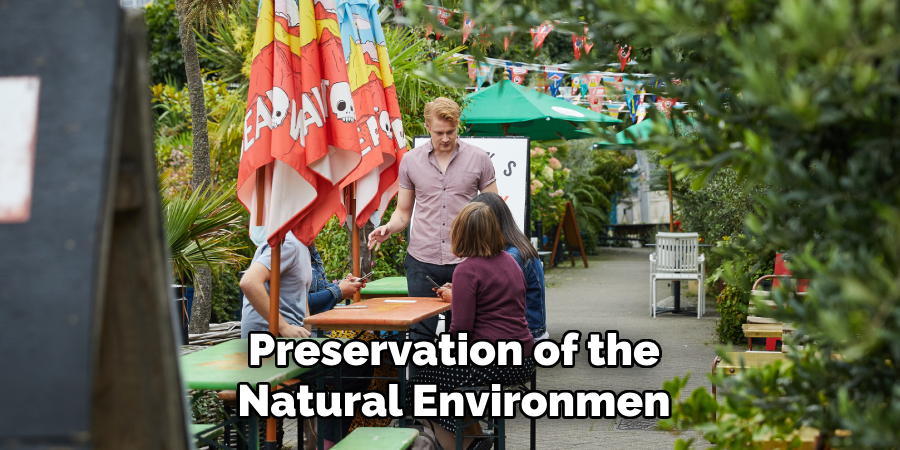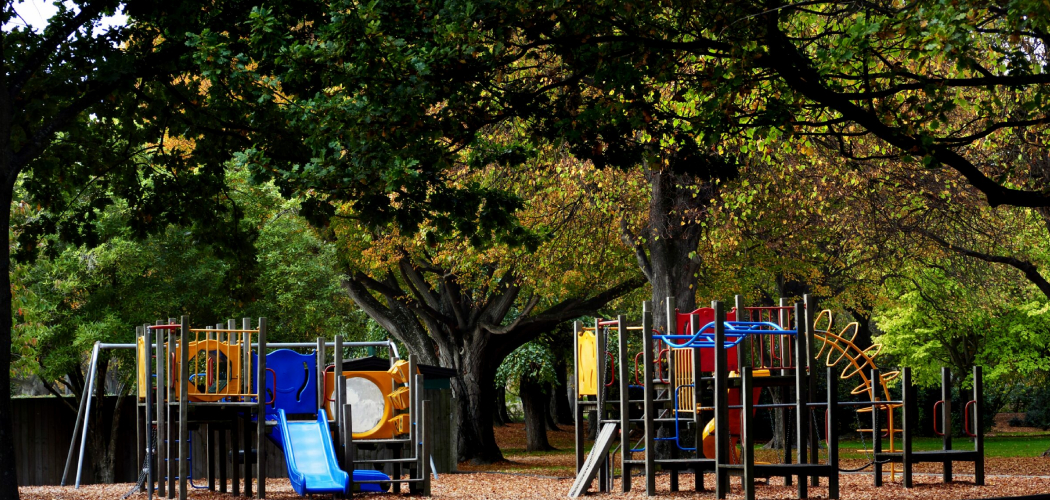Are you planning to visit a recreational park? Whether you are going for a hike, picnic, or just enjoying the great outdoors, it is essential to be aware of potential hazards that may be present in these areas.

Recreational parks provide a space for relaxation, physical activity, and community engagement, but they can also pose safety risks if hazards are not adequately managed. Preventing hazards in recreational parks is essential to ensure visitors’ well-being and maintain the park as a safe and enjoyable environment. By identifying potential dangers and implementing effective safety measures, park administrators can reduce accidents, injuries, and environmental damage risks.
This guide on how to prevent hazards in recreational parks will provide you with essential tips and information to keep in mind before your next park visit.
What Are the Causes of Hazards in Recreational Parks?
Various factors can contribute to hazards in recreational parks. Some of the most common causes include:
- Natural elements such as uneven terrain, wildlife, and unpredictable weather conditions
- Human-made structures and facilities like playgrounds, swimming pools, and equipment
- Improper use or maintenance of park amenities
- Lack of supervision or safety regulations
It is important to understand these potential causes so that you can take necessary precautions to prevent accidents and injuries while visiting a recreational park. In addition to being aware of general hazard causes, it is also crucial to familiarize yourself with specific dangers present in the particular park you are visiting.
What Will You Need?
Before heading to a recreational park, gather all necessary items for a safe and enjoyable experience. Some essential items include:
- Water and snacks to stay hydrated and fueled
- Proper footwear for walking or hiking on uneven terrain
- Protective gear such as helmets, sunscreen, and insect repellent
- First aid kit with essential supplies for minor injuries
Dressing appropriately according to the weather and activities planned at the park is also important. Appropriate clothing can help prevent heat stroke, hypothermia, sunburns, and other weather-related hazards. Don’t forget to bring a map of the park or download one on your phone in case of getting lost.
10 Easy Steps on How to Prevent Hazards in Recreational Parks
Step 1. Research the Park in Advance
Before heading out, research the park you plan to visit. Look up information regarding the park’s layout, facilities, and any specific rules or regulations in place. If available, review trail maps, activity guides, and visitor websites to gain a better understanding of what to expect. Respond to any posted warnings about wildlife, hazardous terrain, or seasonal risks like flooding or extreme temperatures.

Reading reviews or recommendations from other visitors can also provide insights and tips for a safer and more enjoyable trip. Preparation through research ensures that you are aware of potential risks and can equip yourself accordingly, reducing the likelihood of encountering unexpected hazards during your visit.
Step 2. Pack Essential Safety Gear
Bringing the right safety gear can make all the difference in preventing hazards in a recreational park. Essential items include a first aid kit, sufficient water, snacks, sunscreen, insect repellent, and weather-appropriate clothing. If you’re planning activities like hiking or camping, consider carrying additional equipment, such as a map, compass, flashlight, and a multi-tool.
Packaging a fully charged phone or a portable power bank for communication in case of emergencies is also wise. By ensuring you have the necessary supplies, you can better handle unexpected situations and keep your adventure safe and enjoyable.
Step 3. Follow Park Rules and Guidelines

Adhering to the regulations and guidelines set by the recreational park is crucial for your safety and the preservation of the natural environment. These rules are designed to protect visitors, wildlife, and fragile ecosystems.
Standard rules include staying on designated trails, disposing of trash responsibly, avoiding feeding or approaching wildlife, and respecting restricted areas. Additionally, some parks may have specific regulations for activities like campfires, fishing, or water sports. By following these guidelines, you enhance your safety and contribute to the park’s conservation for future visitors to enjoy.
Step 4. Be Prepared for Weather Changes
Weather conditions can change unexpectedly, especially in outdoor environments such as parks or hiking trails. It’s essential to check the weather forecast before your trip and pack accordingly. Bring layered clothing to adjust to temperature fluctuations, a waterproof jacket in case of rain, and sun protection such as sunscreen, sunglasses, and a hat when it’s sunny.
Staying prepared for weather changes ensures you can stay comfortable and safe throughout your adventure, regardless of conditions.
Step 5. Stay Hydrated and Bring Snacks
Proper hydration and nutrition are essential for any outdoor activity. Make sure to bring enough water to last your trip, especially if you’ll be exerting yourself physically or spending extended periods in the sun. A reusable water bottle or hydration pack is a convenient option. Pack snacks like trail mix, energy bars, or fresh fruit to keep your energy levels up.
Staying hydrated and well-fed helps maintain your focus and stamina, ensuring you can fully enjoy your time outdoors.
Step 6. Respect Nature and Leave No Trace
When exploring the outdoors, minimizing your impact on the environment is essential. Stick to designated trails and avoid disturbing wildlife or removing natural objects like flowers or rocks. Practice the “Leave No Trace” principles by packing out all trash, including biodegradable items, and leaving the area as you found it. Respecting nature ensures that these beautiful spaces can be preserved for future generations.

Step 7. Bring Enough Supplies
Bringing enough supplies is crucial to ensuring a safe and enjoyable outdoor experience. Start by packing sufficient food and water to sustain your energy levels throughout your trip. Consider the weather and pack appropriate clothing for comfort, such as layers, rain gear, or sun protection. A fully stocked first aid kit is essential for addressing minor injuries, while navigation tools like maps, a compass, or a GPS device can help you stay on track.
If you’re venturing into remote areas, carrying emergency items like a flashlight, extra batteries, a whistle, and a multi-tool can be lifesaving. Always double-check your supplies and customize your pack based on the unique demands of your activity and environment. Proper preparation enhances your experience and helps you stay safe in unpredictable situations.
Step 8. Take Breaks and Pace Yourself
Outdoor activities can be physically demanding, so listening to your body and taking breaks when needed is essential. Don’t push yourself too hard or attempt more than you’re comfortable with. If you feel tired, thirsty, or overwhelmed, take a break, hydrate, and refuel before continuing on your journey. Pacing yourself helps prevent exhaustion or injury and provides a more enjoyable experience.
Step 9. Travel with a Buddy
Traveling with a companion is one of the best ways to enhance safety and enjoyment during outdoor activities. Having a buddy ensures that someone is there to assist you in case of an emergency, such as an injury or getting lost. It’s also helpful for navigating unfamiliar terrain, as two sets of eyes are often better than one. Beyond the practical benefits, sharing the experience with someone can make it more fun and memorable.

You can support and motivate each other, share stories, and bond over the adventure. If you can’t find a buddy, inform someone you trust about your plans, including your route and expected return time, so they can take necessary actions if needed.
Step 10. Ensure You Have a Plan B
Despite careful preparation, sometimes things don’t go as planned. Ensure you have an alternate plan in case of unforeseen circumstances, such as bad weather or trail closures. Knowing your options beforehand prevents added stress and allows for a smoother transition if needed. Stay open to changing your plans and be willing to adapt to new situations for a safe and enjoyable outdoor experience.
Following these steps can ensure a safe and enjoyable experience while exploring the outdoors.
5 Things You Should Avoid
- Neglecting Regular Maintenance: Ensure that park equipment, trails, and facilities are inspected and maintained regularly. Neglecting maintenance can lead to broken equipment or hazardous conditions that endanger visitors.
- Ignoring Clear Signage: Failing to provide or update clear signs about potential hazards, park rules, or emergency procedures can lead to confusion and accidents. Use universally recognized symbols for better communication.
- Allowing Overcrowding: Overcrowding in recreational parks can increase the risk of accidents, injuries, and strain on park facilities—plan for capacity limits to provide a safe and enjoyable experience.
- Overlooking Safe Planting Practices: Planting dangerous or invasive species can present hazards such as allergic reactions or harm to local ecosystems. Always choose safe and native plants for park landscapes.
- Failing to Address Weather Conditions: Not preparing for adverse weather impacts, such as flooding or icy paths, can lead to hazardous situations. Monitor weather forecasts and update visitors about risks effectively.
Conclusion
How to prevent hazards in recreational parks requires proactive planning, regular maintenance, and effective communication.
By addressing potential risks such as unclear signage, overcrowding, unsafe planting practices, and adverse weather conditions, park management can significantly reduce hazards. Implementing safety protocols, providing clear guidelines, and continuously monitoring park conditions are critical steps to create a secure and enjoyable environment for everyone.
Above all, prioritizing visitor safety fosters trust and encourages community engagement with these vital green spaces.

